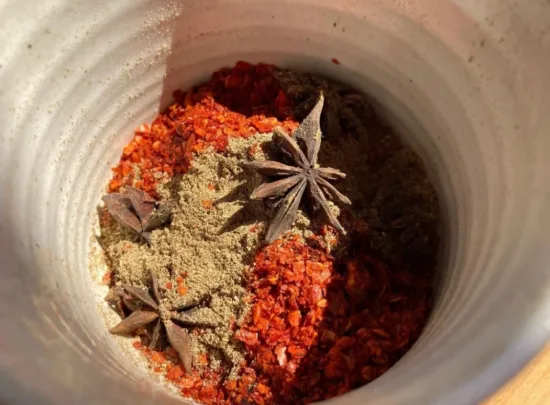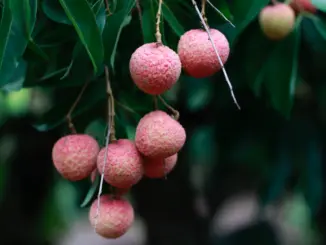
A popular holiday ingredient, star anise has roots in Vietnam and China—and it’s making itself known in a number of coffee shops in the Western world.
BY EMILY JOY MENESES
BARISTA MAGAZINE ONLINE
Featured photo by Mae Mu via Unsplash
In the Western world, star anise is associated with holiday favorites like spiced cookies, mulled wine, and wassail. But did you know that the ingredient is an integral part of Asian cuisine year-round? Native to northern Vietnam and southern China, star anise is most widely cultivated in South and Southeast Asian countries like India, Laos, Cambodia, and Vietnam. Today, we’re seeing it pop up in the specialty-coffee world in a number of ways. Read on to learn more about this whimsical and flavorful spice’s origins, cultural significance, and role in today’s coffee industry.

What Is Star Anise?
Small, hard, and dark brown in color, star anise is a seed pod used as a spice, and it gets its name from its unique star shape. With its warm, sweet, and slightly spicy flavor, the ingredient is commonly used in ways similar to nutmeg, cinnamon, and clove. In South Asian traditions, star anise is often used to spice chai. It’s also an integral flavor in Vietnamese pho, Chinese barbecue pork, and is one of the ingredients in Chinese five-spice powder—a pillar of Asian cooking.

Traveling from East to West
Though star anise has roots in Asia, it’s commonly seen in Western cuisine. The popular English holiday beverage wassail makes use of the ingredient along with flavors of orange, cinnamon, and apple. But how did the ingredient make its journey from east to west?
While star anise’s presence in Asia can be traced back over 3,000 years, historians pinpoint its arrival to Europe to the 1500s. English sailors brought it along the tea routes that spanned from China through Russia. From then on, the Western world would incorporate it into jams, syrups, baked goods, and more.

Star Anise Vs. Anise Seed
Star anise is commonly confused with anise seed. Though both spices have a licorice-like flavor, they also have some distinct differences. First, the two ingredients come from different plants and completely different regions! Star anise comes from the fruit of the Chinese evergreen tree, while anise seed comes from the anise plant—a member of the parsley family that’s native to Egypt and the eastern Mediterranean.
While the two can be used as substitutes for one another, it’s important to note that the flavor in star anise is much stronger. When making the substitution in recipes, it’s recommended to use twice as much anise seed as you would star anise.

Star Anise in the Specialty-Coffee World
Star anise is popping up in specialty coffee in many ways. Located in Los Angeles’ Chinatown, Thank You Coffee offers a “five spice latte”—an espresso beverage inspired by Chinese five-spice powder, using ingredients like star anise, clove, and Szechuan peppercorn.
Milford, N.H.’s Union Coffee Co. also featured star anise in their holiday special, a sugar plum latte using star anise, prunes, apricots, and cranberries.
Though its sweet flavor and warming quality make star anise a go-to for holiday drinks and dishes, we love seeing cafés, restaurants, home cooks, and baristas alike making use of the ingredient year-round.
ABOUT THE AUTHOR
Emily Joy Meneses (she/they) is a writer and musician based in Los Angeles. Her hobbies include foraging, cortados, vintage synths, and connecting with her Filipino roots through music, art, food, and beverage.
Subscribe and More!

Out now: It’s the December 2023 + January 2024 issue! Read it for free with our digital edition. And for more than three years’ worth of issues, visit our digital edition archives here.
You can order a hard copy of the magazine through our online store here, or start a subscription for one year or two.




